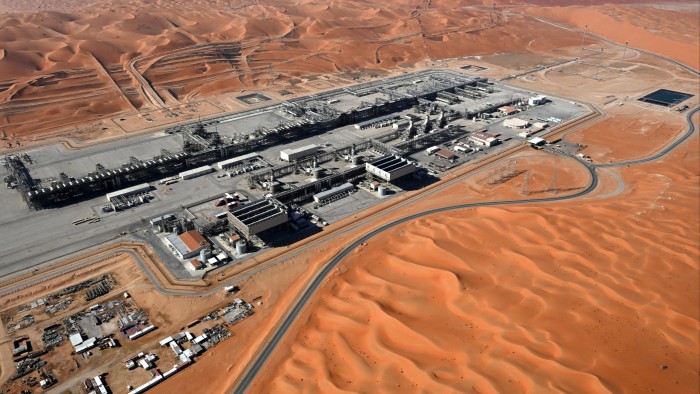Opec+’s repeated decisions to boost oil output signal an acceptance by Saudi Arabia that it is unable to push prices higher, say analysts, amid growing frustrations with other members of the cartel and ahead of a key visit to the region by US President Donald Trump.
The Saudi-led group has surprised the oil market three times in as many months by raising production faster than expected, having previously delayed the unwinding of long-standing output cuts in an effort to support crude prices.
While Opec-watchers are divided over whether Saudi Arabia wants to bring back all its curtailed production or just part of it, they point to evidence that the cuts were becoming less effective, plus the opportunity to curry favour with a US president who has repeatedly called for lower oil prices, as the drivers of its about-face.
“You can’t scream into the storm forever,” said Bill Farren-Price, a senior research fellow at the Oxford Energy Institute. He said concerns about the impact of US tariffs on global growth would have kept pushing prices lower even if Opec+ had continued to delay unwinding its cuts.
“They’re good at tweaking and fine-tuning balances, but they can’t push against a whirlwind force like the macro downturn that seems to be under way.”
Publicly, Opec+ has framed the decision to unwind long-standing production cuts as a response to “healthy market fundamentals”, despite prices touching four-year lows in recent weeks even before its most recent decision to raise output again.
But, in private, Saudi energy minister Abdulaziz bin Salman has complained bitterly that other Opec+ members were consistently pumping above their quotas, reducing the impact of the cuts, of which Saudi Arabia has shouldered the largest share, according to people with knowledge of the conversations.
The cuts mean the kingdom has reduced output by one-fifth in the past three years to about 9mn b/d, the lowest since 2011, outside of the coronavirus pandemic.
Natasha Kaneva, head of commodities research at JPMorgan, said it simply no longer made economic sense for the kingdom to hold back 2mn b/d of production. While cutting output by 1mn b/d could boost prices by $8 to $10 per barrel in 2023 and 2024, according to her models, that benefit would fall to around $4 per barrel in 2025 and 2026.

Opec+ surprised the market in March, outlining a plan, after many delays, to unwind 2.2mn b/d in production cuts by eight members including Saudi Arabia and Russia.
The agreement would have meant boosting the group’s combined production target by about 130,000 b/d every month from April, but it surprised traders again last month by announcing a 411,000 b/d increase for May, before repeating the trick and unveiling the same rise for June.
The moves have led to fears that Saudi Arabia may be preparing to launch a price war by flooding the market with supply, as it did in 2014 against the US shale industry and in 2020 against Russia.
But Ilia Bouchouev, a former president of US commodity trader Koch Global Partners and the author of a recent oil market study published by Saudi Arabia’s main energy think-tank, said a price war was unlikely. “In my opinion they just want to get done with [unwinding] this 2.2mn [b/d Opec+ cut] quickly and see what happens,” he said.
The shift in Opec+ policy also comes at a convenient diplomatic moment for Saudi Arabia, helping push down prices just as Trump prepares to arrive in Riyadh on Tuesday for his first visit to the region since his election win in November.
“Trump clearly sees lower energy prices as an important counterbalance to what he knows is an inflationary tariff policy, and ahead of his visit to Saudi and the other Gulf countries the Opec states will be able to deliver these lower prices on a silver platter for him,” said Farren-Price.
“I think that’s the sort of transactional diplomacy that works with the US president, and the Opec superpowers in the Gulf know it very well.”
Opec+ officials deny Washington has influenced the decisions to boost output.
Nevertheless, it was clearly important for the Gulf states for the visit to be a success, with discussions likely to include talks on a new US-Saudi civilian nuclear partnership and the build out of AI technology in the Gulf with American chips, said Helima Croft, head of commodity strategy at RBC Capital Markets.
RBC’s Croft said it was Kazakhstan’s “clear lack of effort” to comply with its quota that appears to have “tipped the scales” this month in favour of another large production increase. Frustration with Kazakhstan was “broad-based” among Opec+ members, she said.
In total, Opec+ members have reduced combined production by almost 6mn b/d over the past three years, through a combination of official and so-called voluntary cuts.
They include a 1mn b/d voluntary cut by Saudi Arabia, in place since mid-2023 and described by Prince Abdulaziz at the time as the “Saudi Lollipop”, which the kingdom could unilaterally remove at any time.
However, the Oxford Energy Institute’s Farren-Price said Riyadh was unlikely to have taken any firm decisions about future supply.
“I think that they’re still tactical and short-term about these things,” he said. What had changed is that Saudi Arabia no longer appears “squeamish” about increasing output when the market is weak. “They definitely seem to be committed now to a push for volume over price.”
Additional reporting by Leslie Hook
https://www.ft.com/content/2ee02b71-320b-4ecd-9494-be2cd5a31622


